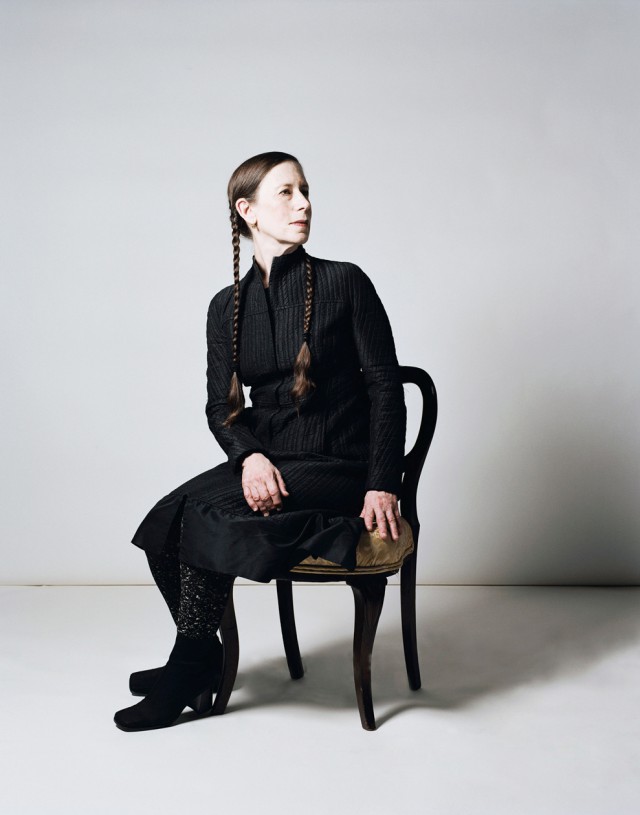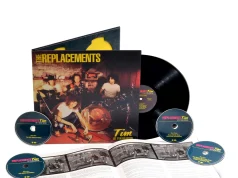
Meredith Monk has accumulated many titles during her nearly 50 years as a performer.
She is a commissioned composer, a choreographer, a vaunted contributor to the avant-garde explorations of downtown New York City in the ’60s, a director, a filmmaker, a dancer. She is a breathing encyclopedia of the human voice, a living catalogue of the range of expression available to the singer. Her performances range from seated, solo a cappella performances to mass ensemble productions involving dance, music and film. Her work has earned numerous accolades, including a $500,000 genius grant from the John D. and Catherine T. MacArthur Foundation and a Guggenheim Fellowship.
A tireless creator and performer, she recently sang two nights of John Cage songs with the New World Symphony in Miami, and when she comes to Boulder on Wednesday, March 13, she will perform and lecture and teach every day through Sunday, March 17. (All events are open to the public.) Monk, 70, shows no signs of slowing down. After all her successes and accomplishments as an artist, she has yet to draw herself away from the urge to create.
“I’m trying to get a balance. I think the last four or five years, I’ve never worked as hard, with so much intensity in my entire life,” she told Boulder Weekly. “On one hand, I definitely want to have more space and more contemplative time. I try to practice my meditation every day. I really want that kind of time. At the same time, I have this feeling that it’s now or never; I won’t get these things done if I don’t do them now.”
A fourth-generation singer, Monk started performing in 1965, just after graduating from Sarah Lawrence College in Yonkers, N.Y. She created her own degree, studying classical music, opera and theater, dance and choreography. Her early pieces integrated all those elements and more, but shortly after graduating she had an epiphany about her voice that would help shape the rest of her career. She realized she could express just about anything with it, her voice had the flexibility of “a spine” and contained a multitude of potential feelings and sounds. She began exploring the potential of her voice, and, those explorations became “the core of the work,” she says. Monk realized she could develop a vocabulary with her voice, much like a choreographer does with the body.
“Within [voices], male and female, were different characters, different landscapes, different emotions,” she says. “I started deeply exploring the voice. I felt like I was born to do it. I had that crazy feeling of going back to my family, blood.”
Monk has a long history with Boulder. In 1975, she came to Naropa University to teach a masters class on voice and movement. She came back again in ’76, and several times after that in the ’70s and ’80s. It was there she met school founder Trungpa Rinpoche, the creator of the Shambhala Buddhist tradition.
In 1985, she became Buddhist after reading Rinpoche’s book, Shambhala: The Sacred Path of the Warrior.
“I was exploring and searching at the time, and I went to all of Rinpoche’s talks in both ’75 and ’76 that I could,” she says. “I was skeptical about any kind of ‘organized religion,’ even though Buddhism is not religion, but still I was very open.”
Monk calls herself a contemplative artist, a somewhat nebulous term describing a mindful approach to artistic creation. (Sue Hammond West, director of Naropa’s School of the Arts, defines contemplative artists as people who draw from three areas, “their intellect and from a more … intuitive space, what we might say a space of no mind or not thinking. Then there’s … what Trungpa Rinpoche called ‘the secret.’ It’s a place of epiphany.”)
Boulder Weekly talked with Monk about fear in the creative process, the meaning of contemplative art and the history of her unique, amazing voice.
Boulder Weekly: You have very traditional music performers [a cantor, conservatory-trained musicians, a radio-jingle singer] in your family. So what drove you to the fringes of art?
Meredith Monk: I guess I always felt that I wanted to create. I always had that strong impulse even as a child. I always loved to make things. I think that when you come from a family like that, it’s hard to find your spot. I had some sense of urgency to find my own way that was my own expression and my own way of thinking about things.
Can you explain what being a contemplative artist means to you?
Number one, I feel that my work has always had that aspect, even before I knew anything about Buddhism, in that it very much goes from the inside out. It starts with a lot of quiet and silence and then what comes from that ends up being the insight, or the musical material. I really try to start from zero every time I make a piece, like beginner’s mind, as painful and as terrifying as that is. Just start from there with no assumptions and no past on my back and really try to discover what the world of that piece is and what it wants. The world of that piece, the principles of that world. There’s a lot of listening involved. That’s a very contemplative approach as opposed to taking stuff from the outside and making something from that.
How much do you consider the audience when you write a piece?
Well I’m making a piece for other human beings; I’m not making it for myself. (Laughs) Of course, I’m trying to make my music and theater pieces as clear and direct and as rich as possible, perceptually, emotionally, spiritually, physically. It’s really making work as an offering to other people.
But you have to start with what your truth is, and you have to try to be very rigorous and meticulous about letting the forms become [self-evident] with as much clarity and discipline as possible, because otherwise you really have nothing to give to other people.
But of course, I’m doing it for other people, so I’m always trying to make work that is rich and inspiring in some ways and that will be very honest and hopefully moving to them.
What you said sounds almost paradoxical. You make a conscious decision to not make conscious decisions about what you’re creating.
Well, the way that I would describe the process is that the first part of it — for me at least, everyone is different — the first part of it is very intuitive and it’s very open. It’s about trying things and finding things, trying to do it step by step and not being overwhelmed, try- ing to get past that fear of the unknown, and letting material come up.
I always say it’s like you bring up the vegetables of a soup, and then you let the vegetables be vegetables until the time comes, and it’s quite intuitive, until you know it’s time to start boiling. And then you start boiling it down, and boil it down, and boil it down, until you’ve really got the essence. And then you have that soup that essentializes all those elements, but the elements are now part of the soup, they’re not individual vegetables.
The first part of the process is very intuitive, trying to keep it as open to as many possibilities as can be, and then at some point you have to use the other part of your brain, which is more you could say the intellectual, or the rigorous part that clarifies, essentializes, makes structures and makes forms. So as an artist you’re really using all your resources.
So after 50 years of doing this you still have a fear of the unknown?
Every time. I wonder every time, “Shouldn’t I not be afraid to start after all these years?” I think it’s that risk factor, that effort to get back to no assumptions, to be in the present, really starting from zero each time, that keeps you very young and vital and vibrant. It also allows you to make new discoveries and not just be falling back on what you already know. I always think that making work from what you already know, you might as well not already work on it. The point of working is to find out something that you don’t know.
I always feel that way about audiences too. A lot of people have a Starbucks mentality. I know what I’m going to get at Starbucks, because I’m sure I’m going to get that. But I think, especially in this world of branding and everything, what makes life really interesting is to not know, and when you go into the performance to actually not know. Not go there because you know what [the performance is] going to be.
Your voice is so unusual and is so precise and controlled, but the techniques that you use are very eclectic and fall outside what one normally hears. How did you develop your voice to do these things?
Well, the word eclectic always makes me pause, because what that usually means to me is that it’s going after a lot of different things from a lot of different places. But actually my process is very different. I actually go inside my own instrument and try to discover sounds and textures and colors within my own voice.
I think that my first exploration was how far could I pull range both high and low. What would a falling voice be like? What would a spiraling voice be like? What would a jumping voice be like? What would a laughing voice be like?
Meredith Monk performs at the Boulder Theater Wednesday, March 13. She will be interviewed by Lama Sarah Harding on Thursday, March 14 at Naropa´s Performing Arts Center. Monk will give a lecture, “Archaeology of an Artist,” Friday, March 15 at the Performing Arts Center. Monk will co-facilitate a workshop March 16 and 17.
Respond: [email protected]














